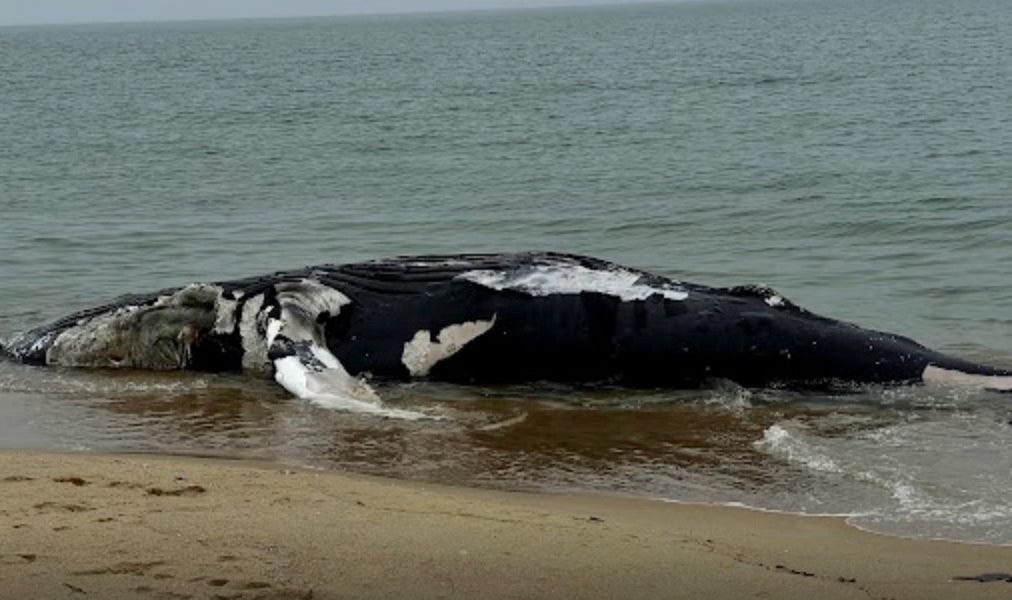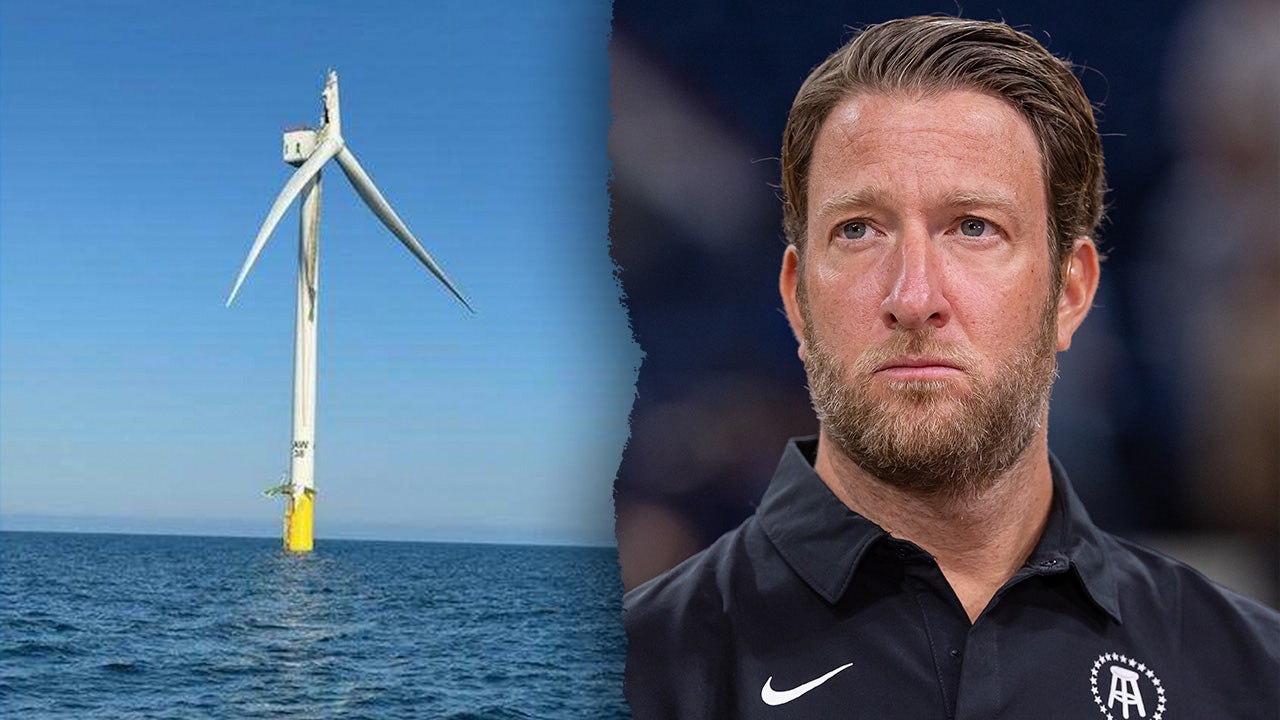Navigation
Install the app
How to install the app on iOS
Follow along with the video below to see how to install our site as a web app on your home screen.
Note: This feature may not be available in some browsers.
More options
You are using an out of date browser. It may not display this or other websites correctly.
You should upgrade or use an alternative browser.
You should upgrade or use an alternative browser.
Do they think we're idiots!
- Thread starter george
- Start date
Interesting NY Times piece, here's part of it, if you want to read the whole thing, which is behind a pay wall, the article is here: As Solar Power Surges, U.S. Wind Is in Trouble

When President Biden signed the 2022 Inflation Reduction Act, it was expected to set off a boom in renewable energy, with hefty tax breaks that would make solar and wind power cheaper than fossil fuels.
So far, however, that dream has only come partly true. Solar panel installations are indeed soaring to record highs in the United States, as are batteries that can store energy for later. But wind power has struggled, both on land and in the ocean.
The country is now adding less wind capacity each year than before the law was passed.
Some factors behind the wind industry’s recent slowdown may be temporary, such as snarled supply chains. But wind power is also more vulnerable than solar power to many of the biggest logistical hurdles that hinder energy projects today: a lack of transmission lines, a lengthy permitting process and a growing backlash against new projects in many communities.
If wind power continues to stagnate, that could make the fight against global warming much harder, experts say. Many plans for quickly shifting the country away from fossil fuels envision a large expansion of both solar and wind, because the two sources generate electricity at different hours and can complement each other. A boom in solar power alone, which runs only in daytime, isn’t enough.
Some of the early predictions that the Inflation Reduction Act would help slash U.S. greenhouse gas emissions roughly 40 percent below 2005 levels by 2030 depended on a rapid acceleration of both solar and wind power this decade. But it is now far less certain that will happen.
When President Biden signed the 2022 Inflation Reduction Act, it was expected to set off a boom in renewable energy, with hefty tax breaks that would make solar and wind power cheaper than fossil fuels.
So far, however, that dream has only come partly true. Solar panel installations are indeed soaring to record highs in the United States, as are batteries that can store energy for later. But wind power has struggled, both on land and in the ocean.
The country is now adding less wind capacity each year than before the law was passed.
Some factors behind the wind industry’s recent slowdown may be temporary, such as snarled supply chains. But wind power is also more vulnerable than solar power to many of the biggest logistical hurdles that hinder energy projects today: a lack of transmission lines, a lengthy permitting process and a growing backlash against new projects in many communities.
If wind power continues to stagnate, that could make the fight against global warming much harder, experts say. Many plans for quickly shifting the country away from fossil fuels envision a large expansion of both solar and wind, because the two sources generate electricity at different hours and can complement each other. A boom in solar power alone, which runs only in daytime, isn’t enough.
Some of the early predictions that the Inflation Reduction Act would help slash U.S. greenhouse gas emissions roughly 40 percent below 2005 levels by 2030 depended on a rapid acceleration of both solar and wind power this decade. But it is now far less certain that will happen.
longcast
Well-Known Angler
All smoke and mirrors. Inflation Creation Act.Interesting NY Times piece, here's part of it, if you want to read the whole thing, which is behind a pay wall, the article is here: As Solar Power Surges, U.S. Wind Is in Trouble
View attachment 80820
When President Biden signed the 2022 Inflation Reduction Act, it was expected to set off a boom in renewable energy, with hefty tax breaks that would make solar and wind power cheaper than fossil fuels.
So far, however, that dream has only come partly true. Solar panel installations are indeed soaring to record highs in the United States, as are batteries that can store energy for later. But wind power has struggled, both on land and in the ocean.
The country is now adding less wind capacity each year than before the law was passed.
Some factors behind the wind industry’s recent slowdown may be temporary, such as snarled supply chains. But wind power is also more vulnerable than solar power to many of the biggest logistical hurdles that hinder energy projects today: a lack of transmission lines, a lengthy permitting process and a growing backlash against new projects in many communities.
If wind power continues to stagnate, that could make the fight against global warming much harder, experts say. Many plans for quickly shifting the country away from fossil fuels envision a large expansion of both solar and wind, because the two sources generate electricity at different hours and can complement each other. A boom in solar power alone, which runs only in daytime, isn’t enough.
Some of the early predictions that the Inflation Reduction Act would help slash U.S. greenhouse gas emissions roughly 40 percent below 2005 levels by 2030 depended on a rapid acceleration of both solar and wind power this decade. But it is now far less certain that will happen.
quote from above:
" because the two sources generate electricity at different hours and can complement each other"
let's see: winds here (southern coast of Lawnguyland) typically die down after dinner, and resume around mid morning. No ? this is not the land of the midnight sun.
" because the two sources generate electricity at different hours and can complement each other"
let's see: winds here (southern coast of Lawnguyland) typically die down after dinner, and resume around mid morning. No ? this is not the land of the midnight sun.
longcast
Well-Known Angler

Nearly half of American EV owners want to switch back to gas-powered vehicle, McKinsey data shows
New findings from consulting firm McKinsey & Co. show a significant share of Americans who own electric vehicles have buyer's remorse. Nearly half want to switch back to gas.
Interesting read....Empire Wind - $155 per MWh?

 robertbryce.substack.com
robertbryce.substack.com


The Offshore Wind Energy Scandal Is Even Worse Than You Think
These 11 charts show how America’s biggest NGOs are colluding with foreign corporations that want to industrialize our oceans with thousands of turbines that will hurt whales and ratepayers
longcast
Well-Known Angler

‘Ruined by negligence’: Dave Portnoy blasts Nantucket wind farm after broken blade shuts down beaches
Barstool Sports' Dave Portnoy is speaking out after an offshore windmill blade snapped and sent fiberglass shards onto the Nantucket shoreline.

‘Ruined by negligence’: Dave Portnoy blasts Nantucket wind farm after broken blade shuts down beaches
Barstool Sports' Dave Portnoy is speaking out after an offshore windmill blade snapped and sent fiberglass shards onto the Nantucket shoreline.www.foxnews.com
Barstool Sports President and CEO Dave Portnoy is speaking out after an offshore windmill blade snapped and sent nonbiodegradable fiberglass shards into the water, washing up on Nantucket shores and forcing the town to close its beaches.
On Tuesday, the Nantucket harbormaster announced that six of the Massachusetts town's beaches would be temporarily closed after pieces of fiberglass washed ashore and said anyone walking the beach should wear footwear to protect themselves from the sharp debris.
Not that I'm trying to validate them, but trying to figure out the "damage". The seabass seem to like the place and all the extra "crap" on the bottom will attract fish. Unlike when a bottom is wiped clean when a roller trawl net is swept over it.

After Blade Failure, East Coast Communities Awaking to Realities of 'Green Energy' Dreams
Debris from the downed Vineyard Wind unit is continuing to wash ashore, this time impacting Westport, Massachusetts....and potentially more is on its way to Rhode Island.
Big news this week!
New Jersey Halts Ocean Wind Projects Amid Environmental Concerns
The New Jersey Board of Public Utilities (NJBPU) has officially rescinded its approvals for the Ocean Wind One and Ocean Wind Two offshore wind projects.
This decision follows legal actions initiated by Cape May County, which raised significant environmental concerns. As part of the agreement, the State has allowed Orsted, the foreign company responsible for the projects, to retain $175 million in escrow funds in exchange for the cancellation.
“Today marks a significant milestone in our ongoing fight against these environmentally harmful offshore wind projects,” said Cape May County Commission Director Len Desiderio. “The BPU’s decision to vacate these orders makes it much harder for Orsted or any other large wind company to use these lease areas near Cape May County beaches. Recent events in Nantucket, where the disintegration of a turbine blade led to massive pollution, have shown the grave risks these industrial facilities pose to our environment and economy. We must prevent this from happening in Cape May County.”
Cape May County officials are celebrating this outcome as a major victory, arguing that offshore wind projects present unacceptable environmental and economic risks. The recent turbine blade failure in Nantucket, which caused significant pollution and beach closures, has amplified their concerns.
Former Judge Michael Donohue, representing Cape May County, emphasized the role their efforts played in Orsted’s decision to withdraw. Although the NJBPU’s action is a major blow to Orsted, Cape May County plans to continue its legal challenges, focusing on constitutional and conflict-of-interest issues.
“They say you can never know which straw will break the camel’s back,” said Michael Donohue, Special Counsel for Offshore Wind for Cape May County. “But it’s clear that Cape May County, along with our partners in the fishing and tourism industries and respected environmental groups, significantly influenced Orsted’s decision to abandon these offshore wind projects. This led directly to the BPU rescinding their approvals for Ocean Wind One and Ocean Wind Two. We’ve informed the Appellate Division of the New Jersey Superior Court that constitutional and conflicts-of-interest issues still need to be addressed. We may also amend our federal court filings since the NJBPU’s actions seem to have nullified Orsted’s federal permits.”
Cape May County is also supporting Brigantine City’s opposition to the Atlantic Shores project, fearing that a similar turbine failure there could cause devastating environmental damage to their beaches, affecting local businesses and families.
This development highlights the ongoing debate over offshore wind projects. While supporters emphasize their potential for clean energy, opponents remain concerned about environmental impacts and disruptions to local communities.
OVERBORED
Well-Known Angler
All sorts of problems for orsted

 www.eenews.net
www.eenews.net

R.I. offshore project hits snag, forcing $306M Ørsted write-down
The Danish wind developer found contamination on a construction site. It’s the latest setback to offshore wind in the U.S.
Those were not pile driven. They have concrete bases.Not that I'm trying to validate them, but trying to figure out the "damage". The seabass seem to like the place and all the extra "crap" on the bottom will attract fish. Unlike when a bottom is wiped clean when a roller trawl net is swept over it.
Over the next decade, the Atlantic coast of North America will undergo a significant transformation with the installation of thousands of wind turbines. This development represents the most substantial change to the region's sea floor since the last Ice Age, approximately 14,000 years ago. A new research study, spearheaded by Dr. Kevin D. E. Stokesbury and his team, and sponsored by the Commercial Fisheries Research Foundation, has been conducted to assess the current state of the sea floor in areas slated for wind farm development. The goal is to predict how the ecosystem might change with the introduction of these turbines and to provide a baseline against which future changes can be measured.
To achieve this, the researchers combined two extensive datasets: one from underwater camera surveys conducted between 2003 and 2019, and another from geological studies dating back to 1966. The data was used to create detailed maps of the sea floor, covering the area from Virginia Beach to the Gulf of Maine at depths of up to 300 meters. These maps show the probability of finding different types of materials, such as rocks or sand, in specific locations, offering a comprehensive picture of the current sea floor.
The study focused on mapping the composition of the ocean floor before wind farm development begins, examining the distribution of various substrates like mud, sand, gravel, cobble, shell, and rock. The findings revealed that sand is the dominant substrate, covering 59% of the mapped areas, followed by mud at 34% and gravel at 6%. Notably, the areas designated for wind farm development were found to have different substrate compositions compared to the rest of the continental shelf. Specifically, these lease areas are predominantly composed of sand (99%) and shell (92%), indicating a softer sea floor with fewer hard substrates like gravel, cobble, and rock.
Looking ahead, the introduction of wind turbines will add numerous hard structures to these soft-bottom habitats, potentially altering the marine environment and the species that inhabit it. This could have significant implications for fisheries and other marine ecosystems. The baseline maps created in this study will be crucial for monitoring changes to the sea floor after wind farm construction, providing a valuable tool for understanding the broader impacts of offshore wind development on ocean ecosystems.
This research, led by Dr. Kevin Stokesbury, who serves as the Dean of the University of Massachusetts Dartmouth School for Marine Science and Technology, offers a critical foundation for assessing the environmental impacts of the rapidly expanding offshore wind industry. The full study has been published, providing an essential resource for future research and policy decisions related to offshore wind energy development.
To achieve this, the researchers combined two extensive datasets: one from underwater camera surveys conducted between 2003 and 2019, and another from geological studies dating back to 1966. The data was used to create detailed maps of the sea floor, covering the area from Virginia Beach to the Gulf of Maine at depths of up to 300 meters. These maps show the probability of finding different types of materials, such as rocks or sand, in specific locations, offering a comprehensive picture of the current sea floor.
The study focused on mapping the composition of the ocean floor before wind farm development begins, examining the distribution of various substrates like mud, sand, gravel, cobble, shell, and rock. The findings revealed that sand is the dominant substrate, covering 59% of the mapped areas, followed by mud at 34% and gravel at 6%. Notably, the areas designated for wind farm development were found to have different substrate compositions compared to the rest of the continental shelf. Specifically, these lease areas are predominantly composed of sand (99%) and shell (92%), indicating a softer sea floor with fewer hard substrates like gravel, cobble, and rock.
Looking ahead, the introduction of wind turbines will add numerous hard structures to these soft-bottom habitats, potentially altering the marine environment and the species that inhabit it. This could have significant implications for fisheries and other marine ecosystems. The baseline maps created in this study will be crucial for monitoring changes to the sea floor after wind farm construction, providing a valuable tool for understanding the broader impacts of offshore wind development on ocean ecosystems.
This research, led by Dr. Kevin Stokesbury, who serves as the Dean of the University of Massachusetts Dartmouth School for Marine Science and Technology, offers a critical foundation for assessing the environmental impacts of the rapidly expanding offshore wind industry. The full study has been published, providing an essential resource for future research and policy decisions related to offshore wind energy development.
Just curious, what was the reason for the far away sound Skinner reported. Are they driving piles to lock the concrete in?Those were not pile driven. They have concrete bases.
Latest articles
-
The Missing Fish!The Missing Fish 198 fish went into the study. 198 fish came out alive. So where did 9% come...
- george
- Updated:
- 4 min read
-
The Biggest Lie in Striped Bass History Started With Two FishThat’s it. That’s the number. Two. For thirty years, the entire Atlantic coast striped bass...
- george
- Updated:
- 3 min read
-
Recreational Anglers Deserve an ApologyI've Been Saying This All Along: Recreational Anglers Deserve an Apology The data is finally in...
- george
- Updated:
- 6 min read
-
Abu Garcia's Beast SeriesAbu Garcia's Beast Series: Revolutionary Equipment for the Modern Swimbait Revolution October...
- george
- Updated:
- 6 min read
-
World's Lightest Spinning ReelGame-Changer or Gimmick? The Daiwa LUVIAS ST Claims to Be the World's Lightest Spinning Reel An...
- george
- Updated:
- 4 min read

